1. Bernardo BC, Weeks KL, Pretorius L, McMullen JR. Molecular distinction between physiological and pathological cardiac hypertrophy: experimental findings and therapeutic strategies. Pharmacol Ther. 2010; 128:191–227. PMID:
20438756.
2. Shimizu I, Minamino T. Physiological and pathological cardiac hypertrophy. J Mol Cell Cardiol. 2016; 97:245–262. PMID:
27262674.
3. Lei H, Hu J, Sun K, Xu D. The role and molecular mechanism of epigenetics in cardiac hypertrophy. Heart Fail Rev. 2021; 26:1505–1514. PMID:
32297065.
4. Sawicka KM, Florek-Łuszczki M, Wawryniuk A, et al. Dronedarone (a multichannel blocker) enhances the anticonvulsant potency of lamotrigine, but not that of lacosamide, pregabalin and topiramate in the tonic-clonic seizure model in mice. Epilepsy Res. 2019; 154:62–68. PMID:
31059963.
5. Quintana-Villamandos B, Gomez de Diego JJ, Delgado-Martos MJ, et al. Dronedarone produces early regression of myocardial remodelling in structural heart disease. PLoS One. 2017; 12:e0188442. PMID:
29161309.
6. Ding RB, Bao J, Deng CX. Emerging roles of SIRT1 in fatty liver diseases. Int J Biol Sci. 2017; 13:852–867. PMID:
28808418.
7. Hajializadeh Z, Khaksari M. The protective effects of 17-β estradiol and SIRT1 against cardiac hypertrophy: a review. Heart Fail Rev. 2022; 27:725–738. PMID:
34537933.
8. Sundaresan NR, Pillai VB, Gupta MP. Emerging roles of SIRT1 deacetylase in regulating cardiomyocyte survival and hypertrophy. J Mol Cell Cardiol. 2011; 51:614–618. PMID:
21276800.
9. Li S, Zhu Z, Xue M, et al. Fibroblast growth factor 21 protects the heart from angiotensin II-induced cardiac hypertrophy and dysfunction via SIRT1. Biochim Biophys Acta Mol Basis Dis. 2019; 1865:1241–1252. PMID:
30677512.
10. Di Vincenzo S, Heijink IH, Noordhoek JA, et al. SIRT1/FoxO3 axis alteration leads to aberrant immune responses in bronchial epithelial cells. J Cell Mol Med. 2018; 22:2272–2282. PMID:
29411515.
11. Yao H, Chung S, Hwang JW, et al. SIRT1 protects against emphysema via FOXO3-mediated reduction of premature senescence in mice. J Clin Invest. 2012; 122:2032–2045. PMID:
22546858.
12. Yao J, Wang J, Xu Y, et al. CDK9 inhibition blocks the initiation of PINK1-PRKN-mediated mitophagy by regulating the SIRT1-FOXO3-BNIP3 axis and enhances the therapeutic effects involving mitochondrial dysfunction in hepatocellular carcinoma. Autophagy. 2022; 18:1879–1897. PMID:
34890308.
13. Song G, Zhu L, Ruan Z, Wang R, Shen Y. MicroRNA-122 promotes cardiomyocyte hypertrophy via targeting FoxO3. Biochem Biophys Res Commun. 2019; 519:682–688. PMID:
31543343.
14. Liu Y, Chen J, Fontes SK, Bautista EN, Cheng Z. Physiological and pathological roles of protein kinase A in the heart. Cardiovasc Res. 2022; 118:386–398. PMID:
33483740.
15. Zhang X, Szeto C, Gao E, et al. Cardiotoxic and cardioprotective features of chronic β-adrenergic signaling. Circ Res. 2013; 112:498–509. PMID:
23104882.
16. Xu J, Han Q, Shi H, Liu W, Chu T, Li H. Role of PKA in the process of neonatal cardiomyocyte hypertrophy induced by urotensin II. Int J Mol Med. 2017; 40:499–504. PMID:
28656205.
17. Hoy JJ, Salinas Parra N, Park J, Kuhn S, Iglesias-Bartolome R. Protein kinase A inhibitor proteins (PKIs) divert GPCR-Gαs-cAMP signaling toward EPAC and ERK activation and are involved in tumor growth. FASEB J. 2020; 34:13900–13917. PMID:
32830375.
18. Sotomayor-Flores C, Rivera-Mejías P, Vásquez-Trincado C, et al. Angiotensin-(1-9) prevents cardiomyocyte hypertrophy by controlling mitochondrial dynamics via miR-129-3p/PKIA pathway. Cell Death Differ. 2020; 27:2586–2604. PMID:
32152556.
19. White PM. The role of the transcription factor Foxo3 in hearing maintenance: informed speculation on a new player in the cochlea. BioMed Res Int. 2016; 2016:1870675. PMID:
27818997.
20. Ren B, Feng J, Yang N, Guo Y, Chen C, Qin Q. Ginsenoside Rg3 attenuates angiotensin II-induced myocardial hypertrophy through repressing NLRP3 inflammasome and oxidative stress via modulating SIRT1/NF-κB pathway. Int Immunopharmacol. 2021; 98:107841. PMID:
34153662.
21. Vamos M, Hohnloser SH. Amiodarone and dronedarone: an update. Trends Cardiovasc Med. 2016; 26:597–602. PMID:
27155812.
22. Li H, Zhou Y, Jiang B, et al. Dual effects of amiodarone on pacemaker currents in hypertrophied ventricular myocytes isolated from spontaneously hypertensive rats. Clin Exp Pharmacol Physiol. 2014; 41:698–707. PMID:
24862298.
23. Takach TJ, Voigtlander JP, Jones M, Clark RE. Myocardial protective effect of amiodarone in hypertrophied hearts during global ischemia. Ann Thorac Surg. 1986; 41:542–546. PMID:
3707248.
24. Zimetbaum PJ. Dronedarone for atrial fibrillation--an odyssey. N Engl J Med. 2009; 360:1811–1813. PMID:
19403901.
25. Chen H, Chen X, Sun P, et al. Discovery of dronedarone and its analogues as NLRP3 inflammasome inhibitors with potent anti-inflammation activity. Bioorg Med Chem Lett. 2021; 46:128160. PMID:
34062252.
26. Li Y, Ruan X, Xu X, et al. Shengmai injection suppresses angiotensin II-induced cardiomyocyte hypertrophy and apoptosis via activation of the AMPK signaling pathway through energy-dependent mechanisms. Front Pharmacol. 2019; 10:1095. PMID:
31616303.
27. Cheng Y, Shen A, Wu X, et al. Qingda granule attenuates angiotensin II-induced cardiac hypertrophy and apoptosis and modulates the PI3K/AKT pathway. Biomed Pharmacother. 2021; 133:111022. PMID:
33378940.
28. Zhu C, Wang M, Yu X, et al. lncRNA NBR2 attenuates angiotensin II-induced myocardial hypertrophy through repressing ER stress via activating LKB1/AMPK/Sirt1 pathway. Bioengineered. 2022; 13:13667–13679. PMID:
35703318.
29. Liu Z, Li C, Yu C, Chen Z, Zhao C, Ye L. TSPYL2 reduced gefitinib resistance and DNA damage repair via suppressing SIRT1-mediated FOXO3 deacetylation. Future Med Chem. 2022; 14:407–419. PMID:
35192400.
30. Senger N, C Parletta A, Marques BV, et al. Angiotensin-(1-7) prevents T3-induced cardiomyocyte hypertrophy by upregulating FOXO3/SOD1/catalase and downregulating NF-ĸB. J Cell Physiol. 2021; 236:3059–3072. PMID:
32964425.
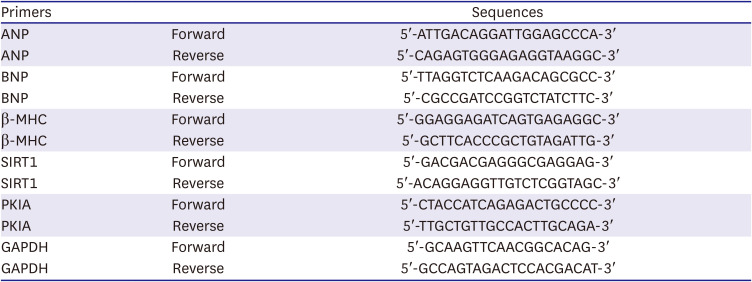
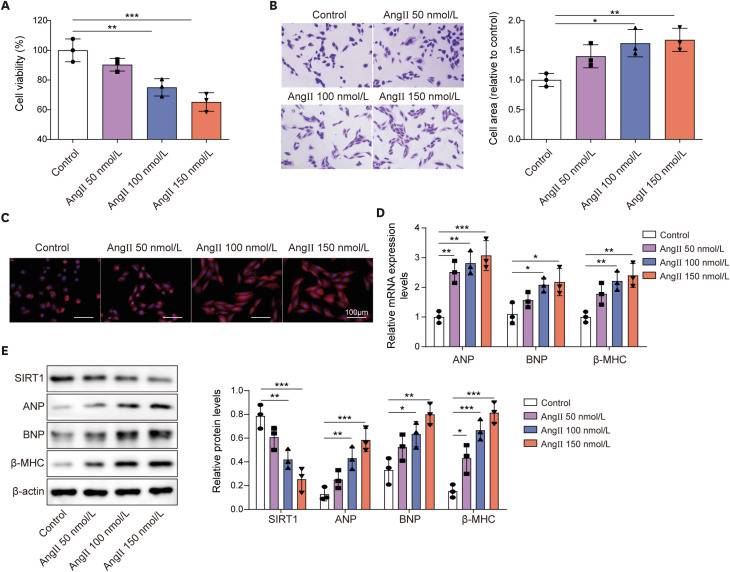
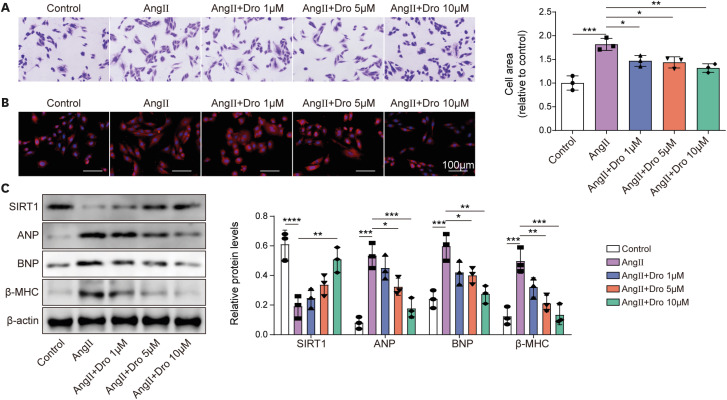


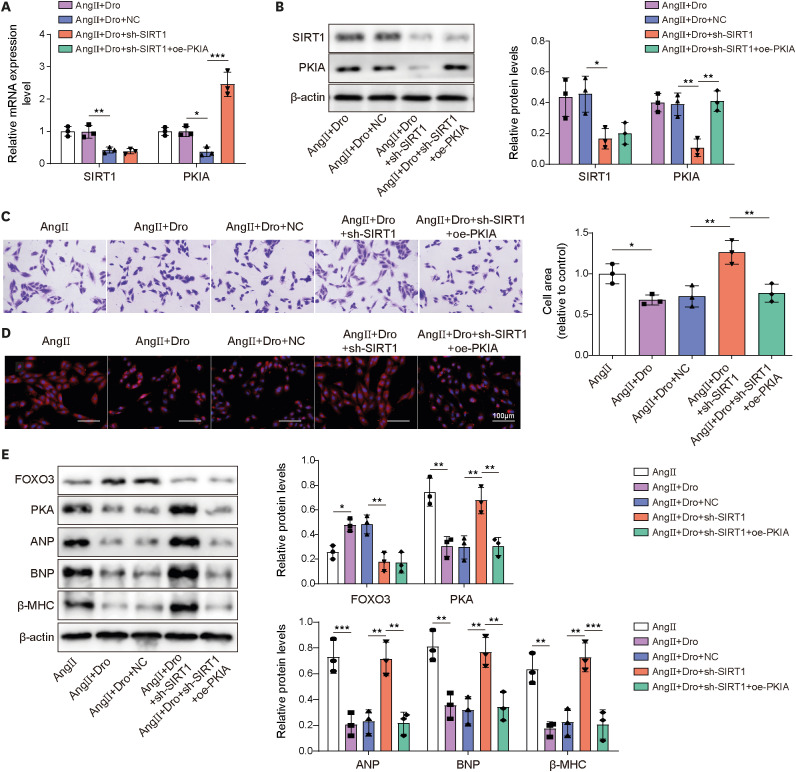
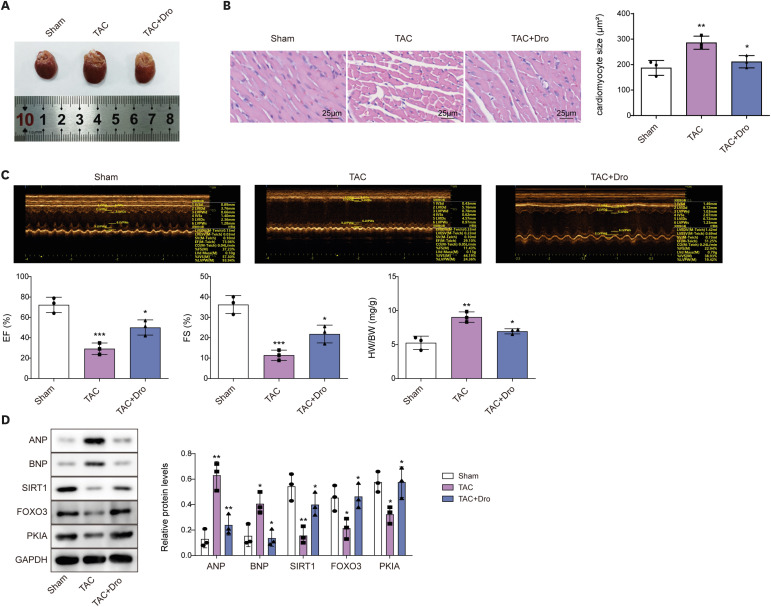




 PDF
PDF Citation
Citation Print
Print



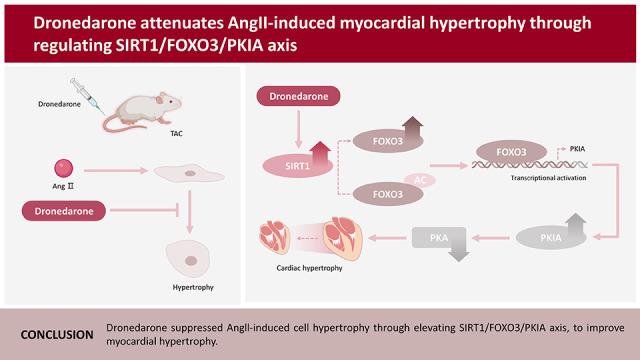
 XML Download
XML Download